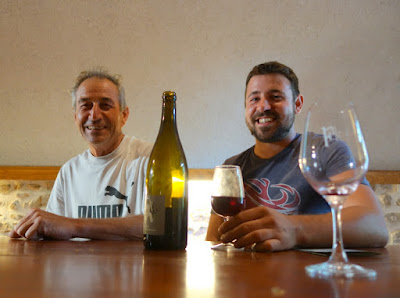The most recent book published in English about Beaujolais, as far as I can tell, is British journalist Rudolph Chelminski's wishfully titled
I'll Drink To That: Beaujolais & The French Peasant Who Made It the World's Most Popular Wine. It is essentially a work of
Georges Duboeuf hagiography, one rendered curious for having arrived in 2007, long after Duboeuf's era of peak influence, and well into the region's contemporary market blight. Chelminski is nonetheless very astute in one passage where he compares the peculiar geographical isolation of the Beaujolais to "certain parts of Appalachia." Don't get me wrong - it's not
Deliverance or anything. But the hills between Mâcon and Lyon are home to a local culture that is as colourful and strange as it is insular. I can think of no better example than the persistence, in the Beaujolais region, of the tradition popularly known as
les conscrits.
Les conscrits, or more formally,
la fête des conscrits, is a ritual that originated during the Second Empire as a way to celebrate the departure of a village's youth into
mandatory military service. By the 20th century it had also become an occasion to commemorate the military service of previous generations of villagers. In most towns the tradition came to include women as well as men. What happens is this: all those born in years ending in the same number as the current year (i.e. those born in 1976, 1986, 1996, etc. are those who are classed in the year of 6) raise money for a blowout block party and banquet, the dimensions of which vary according to the town in question. Some events are small, consisting only of some
fanfare music and drinks at a local bar. The largest event occurs in
Villefranche-sur-Saône, where the tradition is taken so seriously as continue to bar women from participation. There are dedicated church services, a massive parade, banquets, and so on over the course of several days.
Mandatory military service in France ended in 1998. But the tradition of
les conscrits continues throughout Beaujolais from December through May each year, probably because it is a hell of a lot of fun. I had long been keen to experience this particular aspect of Beaujolais culture and was delighted to learn that Camille Lapierre, daughter of the late great
Marcel Lapierre and a talented winemaker in her own right, was among those celebrating her
conscrits in Villié-Morgon this year. She was extremely kind to invite me along to the festivities, which included floats, wigs, disco-balls, drum circles, and square-dancing hippies.































